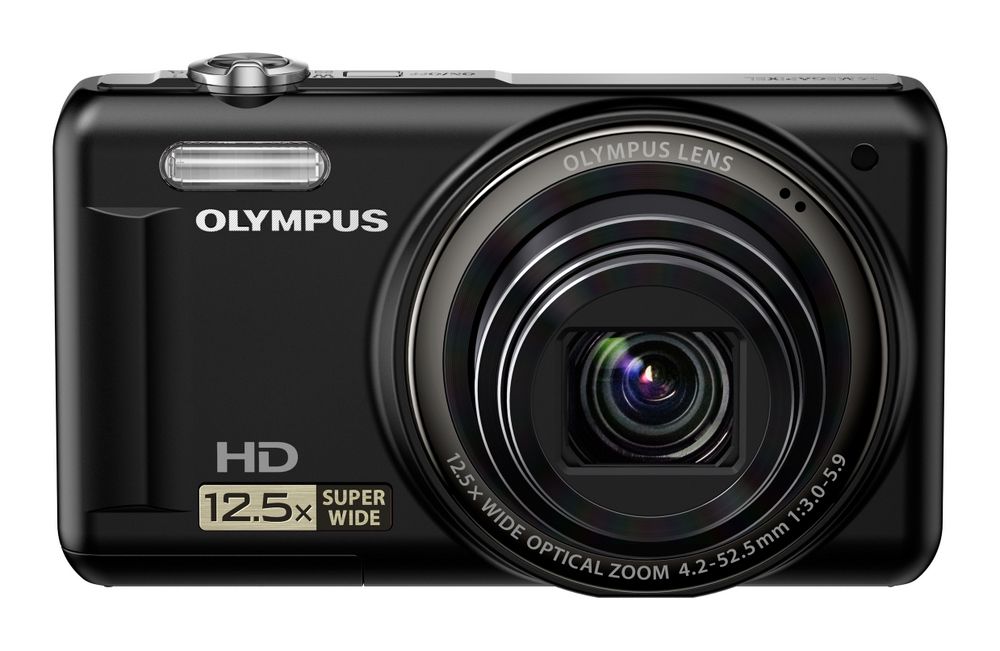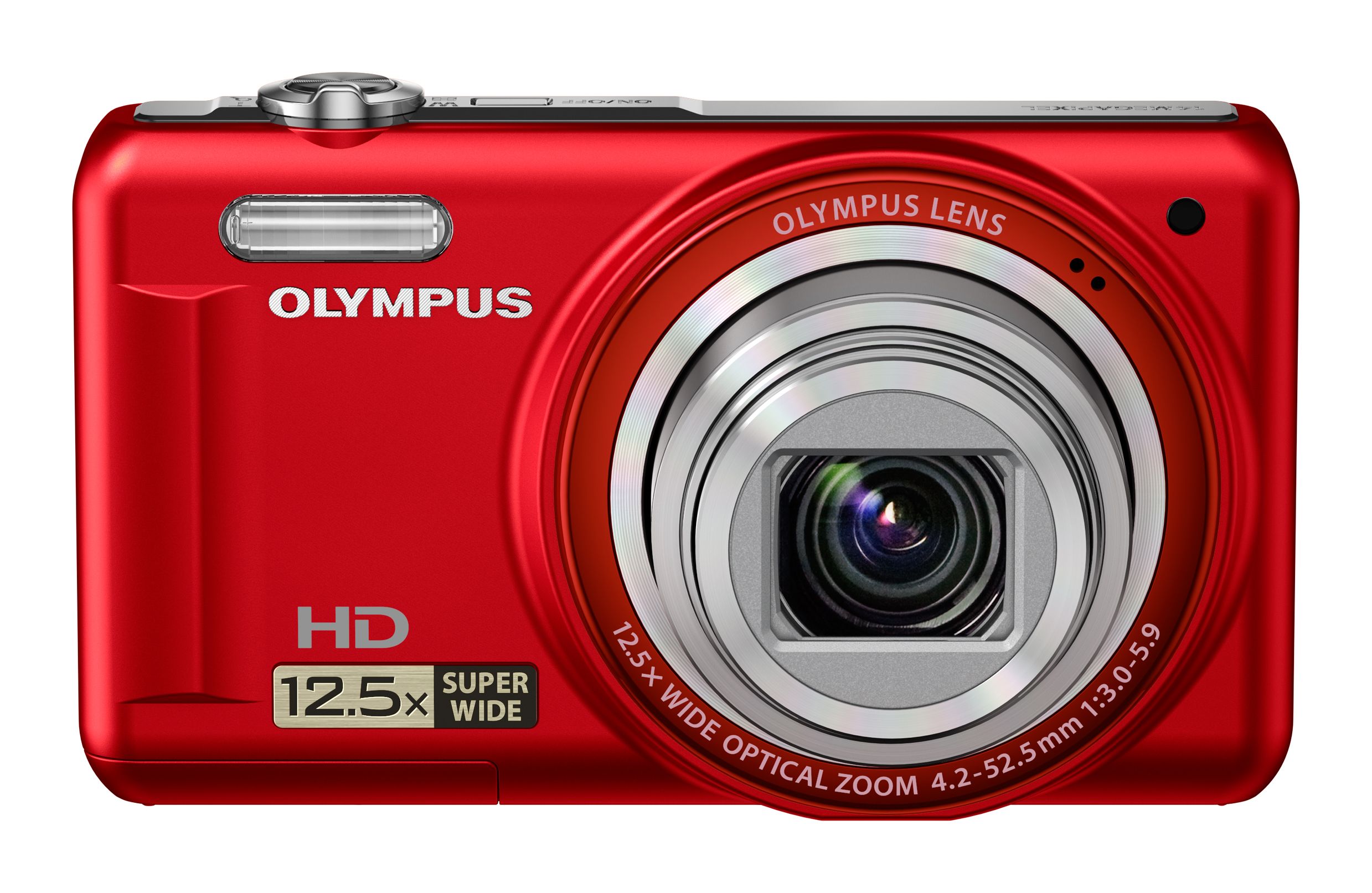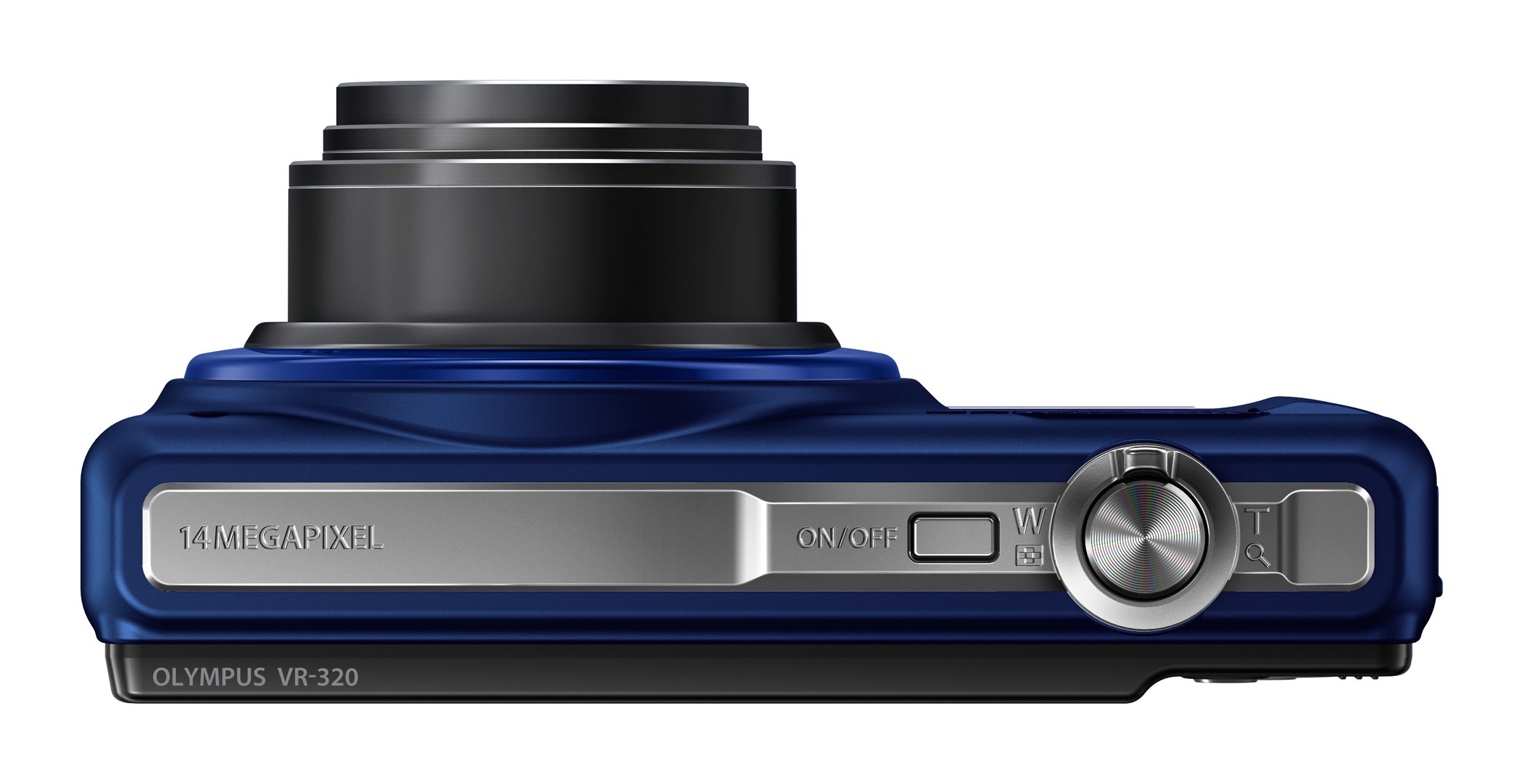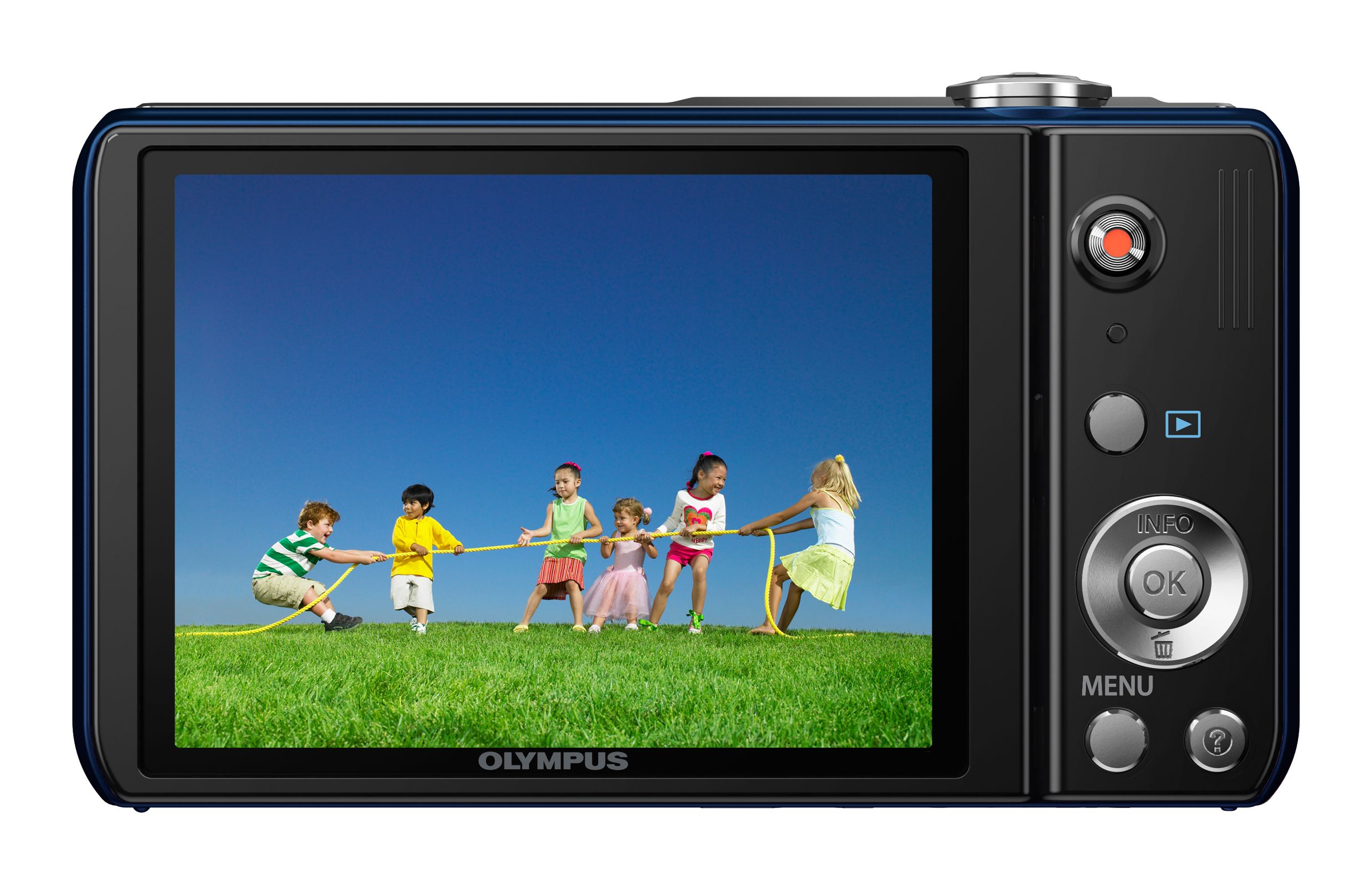The Olympus VR-320, which falls into the ‘compact super zoom’ or travel zoom category, is the bigger brother to the VR-310. Fielding a 12.5x optical zoom that is a match for the similarly-featured Casio EX-ZR100 at twice the price and bettering its own sibling’s 10x.
Our quick take
We weren’t expecting a great deal from a camera priced at just over the £100 mark, and we were right to have modest expectations. Yes, Olympus might have been generous in providing a 12.5x wide angle optical zoom and metal-bodied model for this price, but when results are distinctly average and not a great deal better than those to be had from a modern smartphone, the initial good impression is rather undermined.
If you’re not too fussy about the odd duff image and want a cheap camera that goes further than average, in terms of focal range, then you might find the VR-320 adequate, but unfortunately ‘adequate’ is about all the praise we can muster on this occasion. Of course for the cost it feels churlish to grumble too much, but the VR-320 is a distinct case of getting what you pay for.

Olympus VR-320 - 3.0 / 5
| FOR | AGAINST |
|---|---|
|
|
In theory, all three offer the jack-of-all-trades ability to shoehorn groups of family and friends into frame, as well as pull faraway subjects that much closer, without the photographer having to move and inch.
Design
Outwardly the soap-bar-sized Olympus VR-320 and VR-310 cameras look identical, even if this time we had the sophisticated looking matt black version for review, rather than metallic silver. Speaking of which, you can get it in black, blue, red and silver.
The cost of that extra lens reach (24-300mm equivalent in 35mm terms rather than 24-240mm) the VR-320 is just £20 more than its £99 sibling. Once again the headline resolution on offer is 14 megapixels from a 1/2.3-inch CCD sensor.
Though, as with the VR-310, Olympus is claiming a depth of a svelte 19.3mm for the VR-320, in fact the overall measurements with relevant bumps are a broader 100.6 x 58.2 x 28.5mm. That said, the camera slides conveniently and comfortably into the pocket of a pair of jeans. It’s a lightweight 158g too, with rechargeable battery and your choice of SD or SDHC card already inserted, plus a modest 33MB internal memory to fall back on. While this all sounds like good news for those who’d like a larger lens reach we do wonder if we can have both an impressive zoom and a low price.
Construction quality
Its maker is claiming a metal body for the VR-320, but if that’s the case it’s a little on the thin side, and the build could easily be mistaken for plastic on initial inspection. Still, Brownie points are to be awarded for the fact that small metal controls at the rear replace the plastic Christmas cracker style buttons we’ve seen on cheap Olympus point and shoots in the past.
The camera also feels respectably solid when held in the palm, while staying portable and lightweight. Though there’s not much in the way of a supportive handgrip at the front - just a raised bump running from the bottom of the faceplate up to just below the flash - a row of three raised strips at the back go some way to stopping the thumb slipping around when the camera is gripped in the right hand.
Controls and usability
The backplate and top plate controls have been kept to a minimum. Although the VR-320 is missing a traditional shooting mode dial or obvious mode button the controls are straightforward enough. The top of the camera features a large raised shutter release button, surrounded by a lever for operating the zoom. Sporting a raised lip at the front makes it possible to access this control while your eyes are otherwise trained on the regular 4:3 aspect ratio rear plate LCD.
Next to this, and set into a mirrored - and easy to cover with fingerprints - chrome strip running the length of the top plate is a small, recessed on/off button. Press it, and provided date and time have been pre-set, you’re ready for the first photo or video clip in around two seconds, lens extending from its storage position within the body to maximum wide angle.
The now standard-issue 3-inch, 230k dot LCD screen bursts into life at the back. Somewhat annoying though, and in common with the cheaper VR-310 model, we struggled at times to ascertain whether a shot was properly focused from a quick glance at the screen without toggling the zoom lever to enlarge a portion of the image. So, a sharper screen would be a real asset to this camera.
Still, a half squeeze of the shutter release button and focus is determined in around a second, the screen display momentarily softening before coming back into focus with a familiar green AF point displayed. Squeeze the same button fully to fire off a shot and a maximum 14-megapixel JPEG is captured and written to memory in the standard two- to three-seconds. Keep a finger on the zoom lever and the VR-320 will glide steadily from extreme wide angle to maximum telephoto in three seconds.
Video
If you alternatively want to shoot video then you get a pretty standard 1280x720 resolution at variety at either 30fps or 15fps and with mono sound. It remains to be seen who needs or wants 15 frames per second recording. A red camcorder-style record button is offered top right of the backplate to start video recording. Its location means that it automatically falls under the thumb, for easy access.
While this positioning feels right, the location of the flash at the front means that its all too easy for a middle finger to stray in front as you’re handling this Olympus. Inevitably, it’s something of a compromise on pocket models to find room for all the essentials yet retain barely larger than credit card-sized proportions.
What has also been compromised on this camera is use of the optical zoom when recording video. As with the VR-310 model, we have the choice of being able to alter our framing in the midst of recording or capturing sound - but not both at the same time. This seems overly cautious on Olympus’ part, as the sound of the zoom mechanism is nowhere near the noisiest we’ve heard.
Also, there’s no HDMI output provided here; just regular AV/USB output via a single port at the base, next to a screw thread for a tripod. This is also how the lithium battery is recharged, since no separate mains charger is provided. While this means that the camera is tied up each time you want to recharge the battery, an added convenience is that it can be additionally charged via an available USB port and is not just reliant on mains electricity.
Modes and settings
Although there is no standalone mode dial, shooting options are detailed via an icon displayed in the top right corner of the screen. Select this using the four-way control pad on the backplate and toggle left or right to see what else is available. As the default option here we have iAuto (intelligent auto), the increasingly ubiquitous scene and subject recognising point-and-shoot mode that ensures anyone can pick the VR-320 up and start photographing straight away.
The other options are program mode, which provides some limited manual control over the likes of white balance, macro/close up shooting, self timer, exposure and ISO speeds (ISO 80-1600), as well as single shot or continuous burst shooting. But again, this is all pretty run-of-the-mill stuff. Slightly more interesting are panorama mode offering the ability to shoot widescreen images vertically as well as the usual horizontal, an array of scene modes for portraits, night shooting and firework displays, plus Olympus’ regular digital filter effects or as they’re termed by the manufacturer, ‘Magic Filters’.
Here the filters number seven in total. We get the saturation boosting 'pop art', the corner darkening pin hole, perspective warping 'fish eye', ‘drawing’ – which in rather rubbish fashion reduces subjects to a thin black outline on an all-white ‘canvas’ – the self explanatory 'soft focus', the crude photocopy look of the unique 'punk' filter, and new addition 'sparkle', which adds reflective glints to shiny objects.
If any of this gets too complicated for newcomers, then help is at hand via a press of the button marked with an enigmatic ‘?’ at the bottom right hand edge of the backplate. Keep this button held down when selecting any of the camera’s menu options, and a brief text explanation will be provided. This saves a look at the camera manual proper – here only provided on a CD – or would do, if its function were more obvious in the first place.
Good and bad
While there are good and bad points about the VR-320’s operation, the same can be said of the picture quality delivered. A problem with any small camera that offers a broad focal range is that we can lose detail towards the corners at maximum wide angle and get images that are soft overall at maximum zoom, due to the blurring effects of unsteady hands and camera shake. Unfortunately both these bugbears are present without a particularly close inspection required, even in broad daylight and with conditions seemingly ideal.
Bright lighting also led to some obvious pixel fringing between areas of high contrast, while highlight detail was lost. On a more positive note, colours can be warm and attractive; it’s just a shame that these familiar bugbears can otherwise ruin the shot. On the whole then, the performance of the VR-320 is rather hit and miss, with sharply focused, richly detailed images hard to come by.
To recap
A bigger zoom reach than the cheaper, but otherwise identical, VR-310 model unsurprisingly means that there’s an even greater chance of getting soft results towards the extremities of the VR-320’s focal range. Looks enticing on paper but hit ‘n’ miss in practice.





